#political machines
Explore tagged Tumblr posts
Note
great info on the mayors / political leaders of New York - on the anti side, how about the absolute worst and most destructive , regressive, or otherwise harmful in its history?
This one is mostly covered by my first post about NYC mayors, where I discussed the mayors from Lindsay to the present. However, I can talk about earlier mayors, even though most of them were bland non-entities. One major exception to this rule was Fernando Wood.
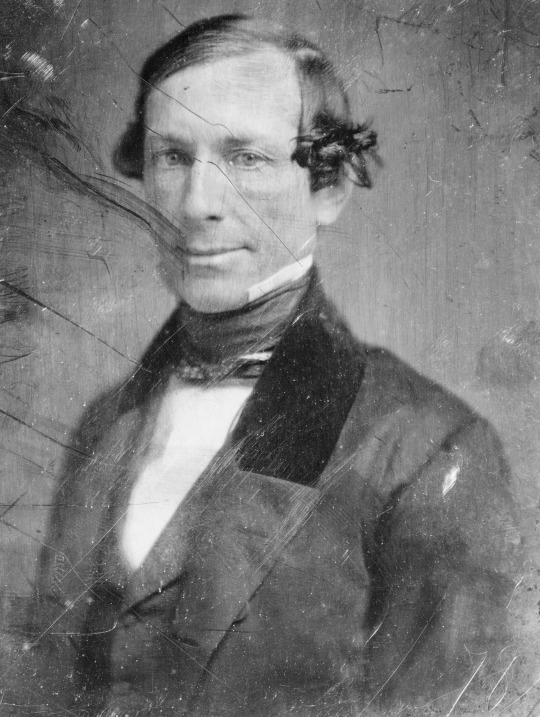
If there was one consistent theme of Wood's career - other than fraud (Wood stole from his bank and his own brother-in-law) and corruption - it was racism and violence.
From the very beginning of Wood's political career, he distinguished himself as the most pro-slavery man in New York Democratic politics, seeking the patronage of figures like John C. Calhoun and James Buchanan. When he shifted from Congress to mayoral politics, Wood went back and forth on what variety of pro-slavery politics he preferred (variously backing Douglas' popular sovereignty position and Buchanan's anti-Douglas position), but was a consistent enemy of John Van Buren's Free Soil Democrats, "Black Republicans," and abolitionism as a concept. Nevertheless, he managed to win election in 1854 with a bare third of the total vote.
Unlike more pliable Tammany mayors, Wood believed in "one-man rule" rather than collective pursuit of power, particularly when it came to direct mayoral control of the police force. While claiming to stand for home rule, democratic accountability, and efficiency, in reality Fernando sought to remove any commissioners on the police board who stood between him and turning the Municipal Police into his personal army. In the 1856 election, Wood gave the police the day off so that the Dead Rabbits gang could engage in street violence, physical intimidation of voters and poll workers, and theft of ballot boxes. Evidently Wood needed the help, because he won with a tiny plurality of the vote and ran well behind the Democratic ticket.
Wood managed to skate from any indictment from Election Day violence, but he had gone too far politically. Tammany broke with Wood, barring him from the building and promoting his political opponents to Federal patronage positions. The Republican-controlled state legislature enacted a new Municipal Charter that ordered a new election for 1857 and transferred control over public works to state commissioners appointed by the governor, and then a Metropolitan Police Act that abolished Wood's Municipal Police and replaced them with a new force under state commissioners.
Wood refused to accept the Metropolitan Police Act or the Municipal Charter as law, ordered his Municipal Police to physically remove state commissioners from government buildings, and when the new Metropolitan Police attempted to arrest him for selling the office of Street Commissioner for $50,000, Wood mobilized the Municipal Police against the "Black Republicans," leading to the "Great Police Riot" in which the two police forces met in open combat on the steps of City Hall. 53 people were injured, the state militia had to be called out to disperse the Municipal Police, and Wood was arrested (and then promptly released by a friendly judge).
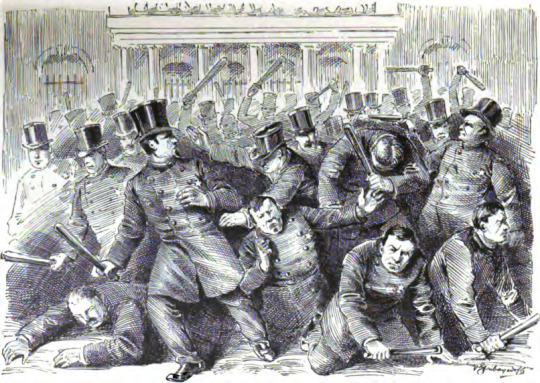
New York City's gangs, with Wood's allies the Dead Rabbits very much in the lead, realized that with the city's two police forces at war (Wood had directed the Municipal Police to stop the Metropolitan Police from carrying out arrests, leading to frequent skirmishes), there was no state monopoly on violence to restrain them.
Amid a rising crime wave, the Dead Rabbits Riot broke out on July 4th - in which the Five Points gangs under the leadership of the Dead Rabbits invaded the Bowery and went to war with both the Bowery gangs and the Metropolitan Police. At its height, the riot involved 800-1,000 armed men and women who responded to police charges by building barrricades. Once again, the state militia had to be called out to quell the violence (at least 8 people killed and about 100 injured), although fighting would continue for another week. Ultimately, the courts ruled against Wood and the Municipal Police were disbanded.
In the election that year, Wood ran on a pro-slavery platform that praised the Dred Scott decision and Buchanan's pro-slavery policy in Bleeding Kansas, while attacking Republican efforts to expand voting rights to black New Yorkers. This race-baiting failed to distract voters from the violence and corruption of the Wood Administration, to say nothing of the Panic of 1857 which had sent unemployment in the city skyrocketing. To get rid of Wood, Tammany formed a fusion ticket with the Republicans and Know-Nothings that narrowly defeated the incumbent mayor.
Learning nothing from his defeat, Wood blamed the loss on a shadowy cabal of "Black Republicans" who had supposedly infiltrated Tammany Hall and formed his own rival Democratic machine out of Mozart Hall. In 1859, Wood once again used armed violence, this time to try to seize control of the State Democratic Convention from Tammany delegates. When this didn't work, Wood once again turned to racism in his campaign to get back into the mayoralty, running on a pro-slavery, anti-John Brown, and anti-abolition platform. He just barely managed to pull out another tiny plurality victory with only 38% of the total vote.
In his next term, Wood crossed the line from mere bigotry to open treason, calling for New York City to secede from both New York state and the United States (both controlled by "Black Republican" abolitionists, according to Wood) so that it could trade freely with the Confederacy. In 1861, Wood came in third place for re-election, finishing only a thousand votes behind both the Republican and the Tammany Democrat.
Despite (or arguably because of) his vocal pro-Confederacy stance and his supporters having caused the 1863 Draft Riots, Wood became the leader of the so-called "Peace" Democratic faction against the War Democrats. Lest you think that Wood was motivated by his abbhorence of war, Wood made the reasons for his opposition clear when he pushed for constitutional amendments to protect slavery, attacked War Democrats as "a white man's face on the body of a negro," and led the Congressional opposition to the passage of the 13th Amendment. In 1868, Wood was censured by Congress for his verbal attacks on the Reconstruction Acts. This censure accomplished nothing, and Wood continued his Congressional career unabated, which culminated in becoming Chairman of the Ways and Means Committee following the end of Reconstruction.
Wood had the reverse Midas touch of turning everything he touched to shit, such that even the few good things he supported - like home rule for New York City and public works jobs for the unemployed - became tainted by association with his violence and corruption. As far as I'm concerned, they should have done him like they did Vallandigham.
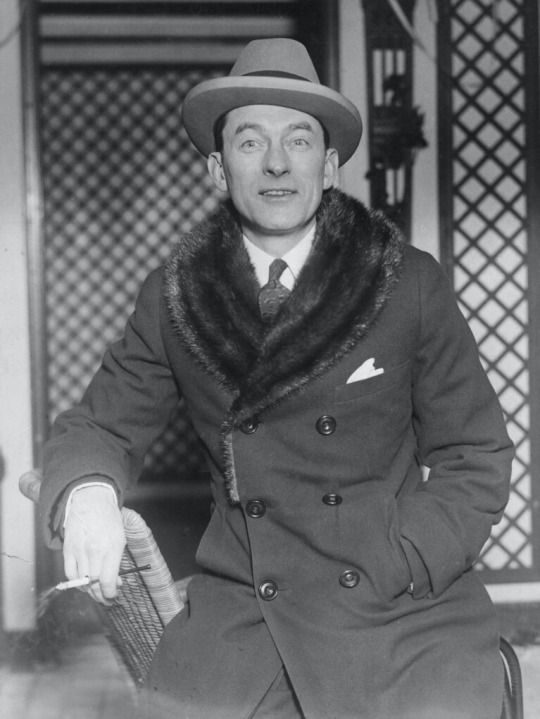
Compared to Wood, the faults of every other NYC mayor seem like the most minor of venal sins.
"Gentleman" Jimmy Walker was corrupt as fuck - supporting his lavish lifestyle by taking bribes from anyone with a pulse, selling the services of the NYPD to the mob, getting in bed with Arnold Rothstein, and perhaps having been connected to the murder of a whistleblower on police corruption and the disappearance of a New York Supreme Court judge - but he was also part of the progressive wing of Tammany Hall and a talented administrator (albeit one who only worked from 3-5 so as not to interfere with his more important time with showgirls, nightclubs, speakeasies, and boxing matches). He supported social welfare policies, opposed the KKK, built municipal waterworks and subway lines (albeit through corrupt contracts), and created the Sanitation and Hospitals Departments.
Similarly, William O'Dwyer was a typical Tammany politician who oversaw a massive police corruption scandal in Brooklyn, and ultimately had to flee to Mexico to avoid investigations from the Justice Department and the Brooklyn DA into his ties with organized crime, but he was in most other respects a typical if unremarkable mid-century NYC Mayor.
Shouldn't have raised the subway fare to ten cents, tho.
#history#u.s history#nyc history#nyc mayor#fernando wood#may he burn in hell#jimmy walker#william o'dwyer#tammany hall#political machines#urban politics
29 notes
·
View notes
Note
Hello! This isn't trying to pressure you or anything, I'm just genuinely curious and wanted to know about your plans for Mario content (since I know you've wanted to do that for a while). Any fun worldbuilding you'd like to share? :)
Thanks for the Ask!
Man, I wrote Mario world stuff ages ago that I completely forgot about... I had a 100 Prompts series and I think I got into the 30s before it stopped. I had tons of worldbuilding for Cackletta and Fawful specifically since they were my favorites :)
I do still keep my [current] Mario drafts around, but unfortunately I'm not sure when I'll post them... I'm never satisfied. I like the canon worldbuilding the way it is and it Does Not Translate very well into my writing style. I've tried for years, but it just... doesn't.
My Mario stuff is "okay," but it just feels very "meh" to me. I think I'll get there someday if I'm willing to work on it, but I'm not able to do that right now. I HAVE actually thought about it and I might post the occasional one-shot, but I'm not sure yet. My worldbuilding is still all over the place and it's very messy and I'm not in love with it.
---
One of my stories is called "Political Machines" and it's about how the name "Mario Kart" came to be; it's Peach POV and delves into the culture of racing Yoshis back before karts came around. I like the idea of it a lot, but it's extremely info-dumpy and I've been struggling with it for years. I think I need to write something else first, but I haven't figured out what. Here's a scene from that:

I also love how savage Peach is skdflj:

---
I also have two Bowser stories (a one-shot called "1-Down" which is Kamek POV and covers the deaths of Bowser's parents, which I LOVE but can't make it hit right) and a very loose draft for a story called Carapace Rex which is a Bowser backstory 'fic. Here's a good scene from the former:
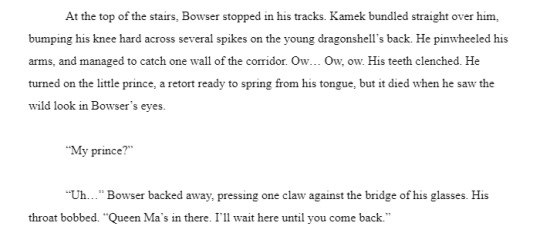
I do miss this 'fic... I really like how extreme Bowser is despite how badly bullied he is by his abusive mom; he's vicious to her and I love that.
tbh it's actually really nice and maybe I'm overthinking it. I'd love to finish it; I just can't get the emotions right.
That said, I might take another whack at it soon and post when I'm done fiddling since I've already seen how I'll fiddle with it for years if I don't commit to a date /shrug. It's definitely one of the stories that ever was... It's just not hitting the emotions I need it to.
---
I LOVE the opening lines to Carapace Rex (not sharing for major "1-Down" spoiler reasons), but I probably won't write the latter since it's been almost 6 years since I started it back in 2018. Getting older, hoping to publish original work, and starting a new long 'fic wouldn't be a good idea (Dog's Life draft started in early 2022 and Factor in 2018; I'm just wrapping up existing projects for now, but Carapace was always super vague so I don't really want to get into it). I might turn it into a one-shot though since I really love the voice in it.
-> The concept behind Carapace was that Koopas were predators of Toads... I actually reskinned the intro for Carapace into a piece of original content I used in my advanced creative writing class in college, then reskinned it again as the backstory for my OC Courtney the snow leopard, then reskinned it again to be the original project I took to a writer's conference this year...
I'm dying to do something original with predators and prey, but I've had a lot of talks with agents and editors and professional authors and we agreed it's not the right time for this content. To make a long story short, I'd either have to strip the fantasy politics out and de-age the characters so it's "animal people middle grade" or I'd have to age up the characters and push the adult angle and I... I don't know how I feel about my public author persona being "adult furry content"...... that's not what I want; I just want wolf kids hunting in the woods for their coming of age and growing up in this post-war world of fantasy politics and ceremonies... sob. The publishing world has categories though and you have to play by the rules.
Maybe someday... but I have a weird relationship with Carapace because of that, because I'm in LOVE with the scenes from it but I'd hate to use them in Mario fanfic when I'd like to use them in original work. Tsk-tsk. Maybe someday once I've already gotten my foot in the door. I'm keeping this project on the backburner as something I might self-publish but I've talked to a lot of people and I'd rather get something published traditionally and try to build my author platform before I invest, because self-pub is... expensive.
Honestly right now Dog's Life is giving me my "we're way too young to be carrying the weight of this many interspecies politics on our shoulders" fix, so at least I have that <3
---
I also have an 8-chapter 'fic called "Out of You" which is about Kamek trying to raise the Koopalings (and Junior). I'll probably scrap most of that and rehash it as something else; I don't think there's much worth saving...? I'll have to think about it.
But here's my favorite WIP scene from it, ft. Ludwig and Peach:
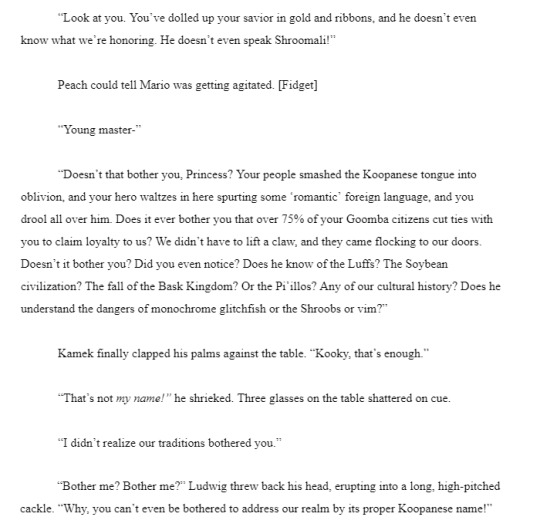
:)
Potential's good, fun is good... Just need to find the right kind of worldbuilding that satisfies me. I'd originally hoped to post Mario stuff before the movie came out in April, but I just never got around to it. Maybe someday? It just doesn't feel right, though, and I can't invest my energy in something I'm not in love with.
---
That's all I have to say right now; I don't want to say too much about my worldbuilding since it's still super messy. I have ideas about what would be "cool" or "interesting" but I just... don't love those ideas enough to make them part of "my take" on the world. There is a fine line between "Riddle's usual magical realism writing style" and "At this point it's an AU." I think I need to cull back the crazy ideas and stick closer to canon.
Is that "boring" and "uncreative"? Eh, I think that's just where my passion lies; I write fanfics because I love the media, and if I didn't love it, I wouldn't be writing fanfics. When I write, I want to continue writing the worldbuilding that I love, which means basing it closely on the media. I guess I'll always be canon compliant at heart even in a fandom where I'm okay with writing AUs, ha ha.
Maybe I'll dig up some of my really old one-shots from that 100 prompts project, clean them up a little, and post some of them. I know there were some Baby Bowser and Doopliss pieces in there. Might be a nice icebreaker.
#Mario#Bowser#Princess Peach#Kamek#Mario fanfic#Mushrooms and more#asks#Anon#ridwriting#Out of You#Political Machines#1 Down#Carapce Rex#Shroom princess#Red plumber#Green plumber#Koopalings#Kooky#The Peach & Kamek relationship is important to me... She and Bowser grew up together and he's Bowser's nanny#Turtle king#Turtle wizard#Long post
3 notes
·
View notes
Text
AH-O 0 (zero)
#wordsbymm#words#writing#thoughts#vent#mmybsdrow#war machine#political machines#AmericanHumanOklahomanZero#AH-O0#Barack & Donald#opening for for(e) conversations#the Hope and Orange#Tattoo
0 notes
Text
The Tammany Machine And The Evolution of Machine Politics
The “Tammany Machine,” also known as Tammany Hall, was a powerful and notorious political organization that operated in New York City for much of the 19th and early 20th centuries. It played a significant role in shaping the city’s politics and had a reputation for corruption, patronage, and machine politics. Here are some key points about the Tammany Machine: Origins: Tammany Hall was founded…

View On WordPress
#Campaign Finance Reform#Civic Engagement#Civil Service Reform#corruption#Democratic Party#Electoral Reforms#Graft#Immigrant Vote Bank#machine politics#patronage#political machines#Republican Party#tammany#tammany hall#tammany machine#voter fraud#Whistleblower Protections#workers&039; rights
0 notes
Text
Rage Against the Machine @ Madison Square Garden, NYC






#rage against the machine#ratm#madison square garden#politics#political#us politics#news#donald trump#president trump#american politics#elon musk#jd vance#law#music#live music#america#us news#maga#president donald trump#elon#republicans#trump administration#republican#democrats#white supremisist#white supermacists#united states#facism#authoritarianism#new york
530 notes
·
View notes
Text


Word on the street
#DDD#deny defend depose#ceo#billionaire#us politics#graffiti#graffiti art#french revolution#class war#working class#that escalated quickly#rage against the machine#medicare for all#us healthcare#brian thompson#uhc ceo#folk hero#united healthcare#Luigi Mangione#free luigi
1K notes
·
View notes
Text
reading baru cormorant is like. I’m at a party where the most insufferable people I know are playing settlers of catan. they invite me to join I say no thank you. they say oh come on you’ll pick it up quickly. I say that’s fine I’ll just watch. I try to focus but there are three beautiful women attempting to seduce one of the players and this is so much more interesting. and yet she ignores them and continues to play settlers of catan
#baru cormorant#the traitor baru cormorant#I’m only a quarter through the second book no spoilers please#not that I’d understand them#I’m trying I really am but the political machinations make my head swim
355 notes
·
View notes
Text

🏳️⚧️👹
#one piece#yamato#okiku#i am polite and don’t deadname#if you use she her for yamato you’re getting put in the Machine. sorry#sssaturn art
887 notes
·
View notes
Text
TBH in the original Hellblazer it's not that all of John's friends died, lot of them did, for various reasons, (plus there's the Newcastle incident and all that personal trauma), but lot of the time the old friends John reconnects with have either abandoned their anarchist/leftist principles or revealed they never had any particularly solid politics and John is like 'wow this sucks we're all going to die' and then wanders around for a bit depressed until satan tries to kill him again
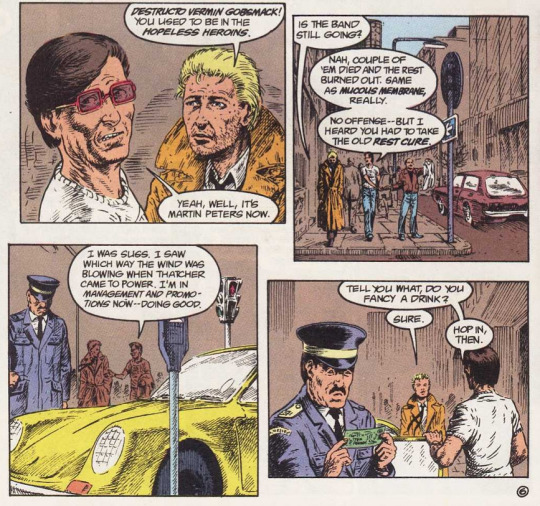


Most of new 52/DC stuff with John just refuses to interact with the political elements this way. so it is what it is and can't even really answer the question why john is depressed
#i forget which issue it is but i think about the delano story a lot where he has nostalgia for something unreal and then just starts#dissociating#john constantine#hellblazer#like there's the overlapping personal trauma and the then current political landscape#(which changes over time from thatcher/major etc to new labour etc. not that even the earliest comics are uncritical of labour as well ofc)#and lot of the comic is john desperately trying to find reasons to live and political movements to attach himself even#(most notably i g in fear machine)#timeline wise john was in a mental hospital (or in and out) when thatcher came to power etc
264 notes
·
View notes
Note
Who do you consider to have been some of the most important / formative mayors of New York?
This is a great question, and actually rather difficult to answer, because for the longest time both Tammany Hall and the Whig/Republican machine tended to prefer mayors who were dull but reliable non-entities. Starting in 1824, NYC was divided into wards that elected Aldermen and Assistant Aldermen to the Board of Aldermen and the Board of Assistants, who together made up the bicameral Common Council. This led to a system whereby the real political action was shunted to the local level, where the ward's Aldermen and the ward boss (and his precinct bosses) ran the show.
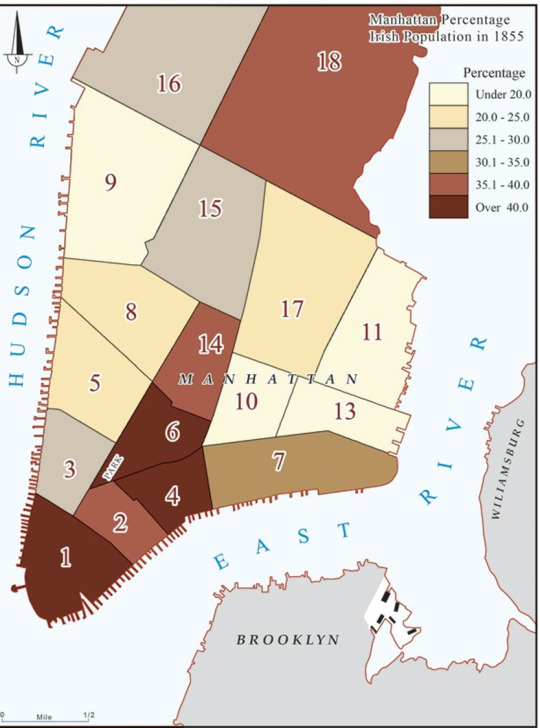
The downfall of Boss Tweed led to some reforms, with the bicameral Common Council replaced by a unicameral Board of Aldermen who were elected from larger State Senate districts or at-large, as part of the Whig Party's drive to dilute the power of Tammany's Irish Catholic voting base. This would change somewhat when the five boroughs were consolidated into Greater New York in 1898, which added the borough presidents and the Board of Estimate into the mix, and then again in 1901 and so forth.
However, the overall trend was a weak mayor system where real political power was fairly evenly distributed between aldermen (who were not only the city's legislatures but were also represented on the Board of Estimate through their President), the borough presidents, the mayor, and the comptroller.
So the major players in NYC politics tended not to be mayors:

Dewitt Clinton was incredibly transformational, but despite serving three terms as mayor his real mark on New York was as governor where he was the driving force behind the construction of the Erie Canal.
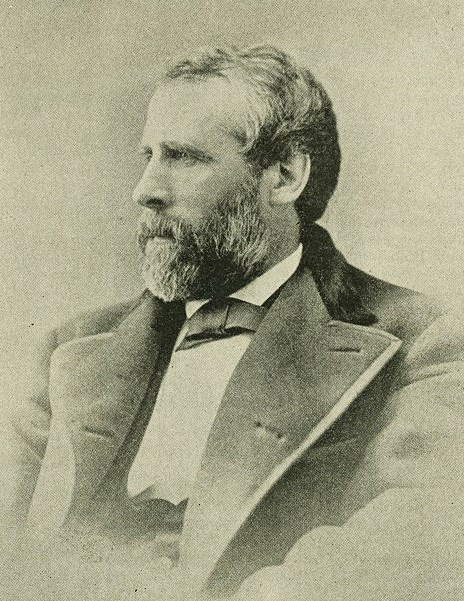
Andrew Haswell Green, the "Father of Greater New York," was responsible for the creation of Central Park, the New York Public Library, the Bronx Zoo, The Museum of Natural History, the Metropolitan Museum of Art, Riverside, Morningside, and Fort Washington Parks, Columbus Circle, and the consolidation of Greater New York - but he never served as mayor. The original Robert Moses, Green's political power came from his leadership of the Central Park Commission, the Greater New York Commission, a six-year stint in the Comptroller's office, and his position on a number of NGOs.
But if we're talking transformative mayors, there is one name that rises above all the rest: Fiorello goddamn LaGuardia.

There had been other reform mayors before him - Seth Low had established the Civil Service, John P. Mitchel brought scientific management to city government - but none of them had ever been able to get re-elected. Unlike the wealthy WASP reformers, LaGuardia knew how to beat Tammany at the ethnic politics game. Tammany's strength had always been in the Irish wards of the city, and while they had tried to divide-and-rule by promoting the naturalization of Russian and Polish Jews in return for them voting for Irish-American politicians in the Lower East Side while noticably neglecting the naturalization of Italians, the emergence of second-generation Jewish and Italian voters meant that this strategy had run its course.
Born to a Sephardic mother from Trieste and a lapsed Catholic father from southern Italy, Fiorello had an astonishing knack for transcending ethnic political boundaries in New York City - he spoke Italian, German, Yiddish, and Croatian, but he was also a progressive Republican and Episcopalian (which meant he could speak middle-class WASP too). LaGuardia won the 1933 mayoral election by bringing together a Fusion coalition that brought middle class German-American Republicans together with Italians and Jews, a coalition that he would expand in 1936 by bringing socialists, unions, and black voters together into the American Labor Party.
Over his twelve years as Mayor, LaGuardia was almost pathologically active (in a way that's oddly reminiscent of Henry II), transforming almost every aspect of New York City:
Jobs for the Unemployed:
LaGuardia's immediate mission as mayor was to fight the Great Depression that had had left a third of the City unemployed. He did this by forming an enduring alliance with FDR in which the New Deal would provide NYC with unpredecented level of federal support in exchange for NYC becoming the New Deal's model city - the first of the "Little New Deals." In his first hundred days in office, LaGuardia convinced FDR to give New York City a full 20% of the Civil Works Administration's work relief budget. This put 200,000 New Yorkers back to work - and this would only be the beginning of New York City's experiments with direct job creation.
As part of Fiorello LaGuardia's "Little New Deal," LaGuardia's new Parks Department employed 70,000 workers - paid for by CWA and later WPA money - to rebuild New York City's parks, constructing the Central Park Zoo and 60 playgrounds in the first year.
When the New Deal created the Works Progress Administration in 1935, LaGuardia once again lobbied FDR to put NYC first in line. This culminated in some 700,000 New Yorkers - a tenth of the city's entire population - getting jobs through the WPA and other New Deal programs. Together with the Parks Department, LaGuardia and Robert Moses would mobilize this workforce to completely transform the city.
Public Works:
This is where we have to discuss Fiorello LaGuardia's fateful decision to make Robert Moses his master builder. While Moses was in the process of becoming the "Power Broker" before LaGuardia - he had already been made president of the Long Island State Park Commission and chairman of the New York State Council of Parks - LaGuardia enabled his ascent to the heights of power by making him Parks Commissioner, Commissioner and then Chairman of the Triborough Bridge Authority, Commissioner of the NYC Planning Commission, and Chairman of the Emergency Public Works Commission.
The pact between them was simple: LaGuardia would give Moses the public appointments he needed to consolidate public works across the city and would steer New Deal public works money through Moses' agencies, and in exchange Moses would be LaGuardia's master builder with a mandate to "build it quickly and build it well." This was not an easy task, because Robert Moses was a political enemy of FDR and FDR tried to bar him from being given any WPA or PWA funding, but the mayor was able to persuade Roosevelt that it was more important that LaGuardia's proposed $1 billion public works program for NYC be carried at speed and administered efficiently.
As LaGuardia's workhorse, Moses would oversee almost all of NYC's public works, including the West Side Highway, the future FDR Drive, the Brooklyn Battery Tunnel, the Triborough Bridge, the LaGuardia and future JFK Airports, and Jones Beach Park, among others. LaGuardia would also construct the Sixth Avenue Subway line, the Queens-Midtown Tunnel and the Lincoln Tunnel without Moses (who was completely uninterested in mass transit and who always preferred bridges to tunnels).
In addition to these major projects, LaGuardia with and without Moses built the city's first municipal power plants, 37 sewage treatment plants, 9 fire houses, 142 elementary schools and 22 high schools, half of NYC's then-23 municipal hospitals, eight District Health Centers to provide preventative, specialized, and public health immunization care, and the first 14 of the City's public housing projects.
City Government:
To dismantle Tammany's patronage system, he began to massively expand the civil service to eliminate patronage jobs, and then when Tammany beat him on a government reform bill in 1934, he simply kept pushing. He pushed through the LaGuardia Reform Charter of 1938 that abolished the Tammany-dominated Board of Aldermen and replaced it with a City Council elected by Single Transferrable Vote, established the Board of Estimate as a central administrative body with powers over the city budget, public contracts, franchises, and land use - crippling Tammany's ability to raise money through graft and kickbacks.
To transform New York City into a "strong mayor" model, he undertook a campaign of transforming independent agencies scattered across the five boroughs into a system of unified citywide departments or public authorities that answered directly to the mayor and gave him unprecedented state capacity. In 1934, he formed the Parks Department and the New York City Housing Authority; in 1936 he formed the Department of Buildings and the City Planning Commission; in 1938, he restructured the Department of Welfare to run the city's social welfare programs and a massively expanded public hospital system; in 1940, he took over the IRT (operating the 1, 2, 3, 4, 5, 6), and the BMT and IND (operating the A, B, C, D, E, F, G, J, L, M, N, Q, R, W, and Z lines), unifying the NYC subway system for the first time.
To deal with police corruption, LaGuardia appointed Lewis Valentine to purge the NYPD so that the mayor could use it (and Thomas Dewey) in a crusade against the mafia's gambling, racketeering, and vice operations. This marked a rare period of honesty and effectiveness in the NYPD, although after WWII the system of protection rackets and mafia corruption would eventually re-establish itself.
Ironically, this exhaustive list of accomplishments really made it hard for later mayors to distinguish themselves, because mostly their task was completing, managing, or mis-managing the system that LaGuardia had built. After LaGuardia I would say that Robert Wagner Jr. (established public sector collective bargaining, created CUNY, Lincoln Center, Shakespeare in the Park, and dealt the killing blow to Tammany) and John Lindsay (see my previous post, but chiefly scatter-site housing, the civilian complaint review board, and the Knapp Commission on police corruption) are on my list of formative mayors.
After them, there have been long-serving mayors and good mayors, but unfortunately not the two combined.
#history#historical analysis#nyc history#nyc mayor#fiorello laguardia#tammany hall#urban history#urban studies#urban politics#political machines#new deal#robert moses#infrastructure
29 notes
·
View notes
Text
coping with the election results😔😔💔

#2024 presidential election#tmnt mikey#bendy and the ink machine#mikey rottmnt#rottmnt#bill cipher#gravity falls#batim#my new character#pinkie pie#mlp g4#invader zim#art#fanart#us politics#kamala harris#donald trump
302 notes
·
View notes
Text

Bro egg prices are higher than I’ve ever seen them what are you on about? 😭
$40+ for 60 eggs?!?! How is that “down”?
Reminds me of the Orwell moment, “they announced that the chocolate ration had been increased to X grams, when in fact the day before it has been decreased to X grams. Would the people swallow that with so little time? Yes. Yes they would.”
What dystopian type of world are we living in 😭😭😭😭😭
#us politics#trump administration#donald trump#donald j trump#political#politics#what the heck#it’s going down I’m yelling timber#the us chaos machine#doge#elon musk doge#white house#what’s going on
118 notes
·
View notes
Text
the way the pitt tells stories about drugs and the drug crisis in the united states is sooooo good like it's so rare to see a story where drug users aren't just completely villified and left to rot with everything taken away from them, and in a country where we have a long history of intense drug policing, stigmatiziation, and a desperate need to take a public health centered, harm reduction based approach to drugs it's amazing to see
#like lets talk about it these storylines are arguably some of the best written parts of the show and are gonna touch every characters' story#whether the characters are dealing with addiction themselves or helping others or both#they also have the characters act how you'd expect them to#which is another HUGE writing win because it doesn't make everything seem like they threw it through the Political Correctness machine#for lack of a better term#the pitt#the pitt max#if you want to learn more about drug policing and the war on drugs in the united states watch the documentary 13th#its not exactly the same stuff that relates to the pitt but it's BRILLIANT
66 notes
·
View notes
Text
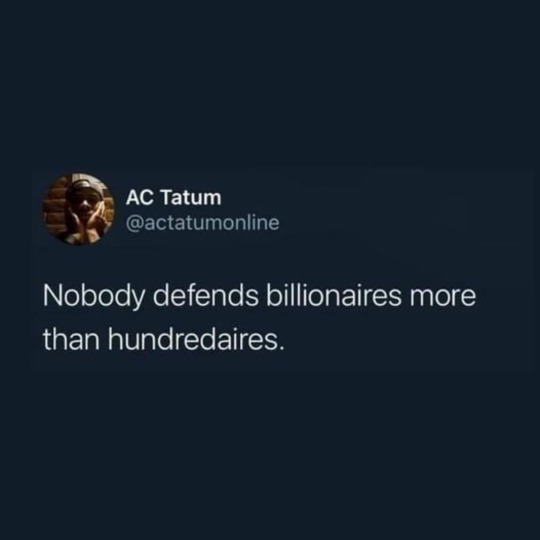
Nobody defends billionaires more than hundredaires.
#Nobody defends billionaires more than hundredaires.#billionaires#oligarchy#corporate greed#anti capitalism#neoliberal capitalism#late stage capitalism#stockholm syndrome#us politics#class consciousness#class war#deny defend depose#eat the rich#luigi mangione#french revolution#resistance#rage against the machine#ddd#revolution#working class#middle class
354 notes
·
View notes
Text

Who’s down to have some taste of my boobs
#sexy pose#curvy and cute#cute#seduce me#beautiful#romance#so cute#so hot and sexy#natural body#big bootie#cutie w a bootie#black and white#politics#ultimate sex machine
59 notes
·
View notes
Text
It's times like these that I really wish Michael were American because he'd be leading us into fucking battle right now and by God, I would follow him...

#michael sheen#welsh seduction machine#u.s. politics#the kind of charisma that makes you want to sack a village or three#my prince. my king.#imagine him singing the Les Miz song#in that mellifluous Welsh voice#'do you want me to get naked and start the revolution?'#yes. yes i do Michael#the Welsh get all the charismatic leaders#it's not fair damn it#thoughts#gif by me
54 notes
·
View notes